The 25 stats that help explain Italy today

Where has the highest life expectancy? How many residents are non-Italian? Which region feels safest? We take a look at the latest figures from Italy's national statistics office to show you today's Italy, by the numbers. Nearly 12 percent of all Europeans are Italian.
Italy is the EU's fourth biggest country by population behind Germany, France and the UK. It makes up 11.8 percent of Europe's total population of 512 million.
Italy's total resident population is 60.39 million.
Just over 60 million people lived in Italy by 2018, Istat estimates, the lowest number since 2012. There are over a million and a half more women than men: 31.06 million women outnumber 29.43 million men.
READ ALSO:
- Thousands of idyllic Italian villages risk dying out
- Why Airbnb thinks a free holiday can help fix Italy's depopulation problem
- Where do all the English speakers live in Italy?
More than a third of the population is concentrated in just three regions: Lombardy, Lazio and Campania. The region with the smallest population is Valle d'Aosta.
Italy's average life expectancy is 82.7 years.
Men can expect to live 80.8 years, while women outlive them to 85.2 years. The longest-living region is Trentino-Alto Adige, while the regions with the lowest life expectancy are Campania and Sicily.
In Europe, Italy has the fourth highest life expectancy behind Spain, France and Luxembourg.
READ ALSO: From now on in Italy, you're only old after 75
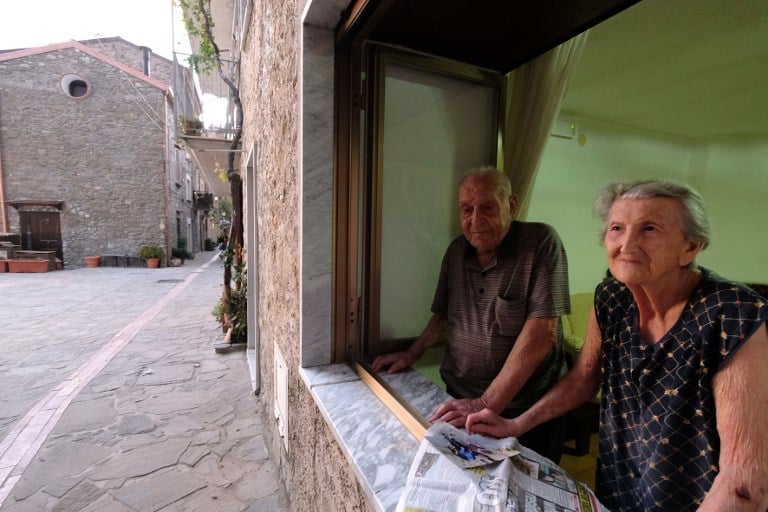
Photo: Mario Laporta/AFP
Italy's birth rate is almost the lowest in Europe.
Italian women had an average of 1.34 children in 2016. In Europe, only Spaniards had fewer babies. And Italy's birth rate has probably dropped even further since then: Istat estimates it was 1.32 children/woman in 2018.
Italy's population is the most ageing in Europe.
Italy's ageing index, the number of people aged 65 per 100 people aged under 15, is the highest in the EU at 165.3. It's estimated to have climbed even higher in 2018 to 168.9, a new national record and an increase of over 25 in ten years.
READ ALSO: What does a plummeting birth rate mean for Italy's future?
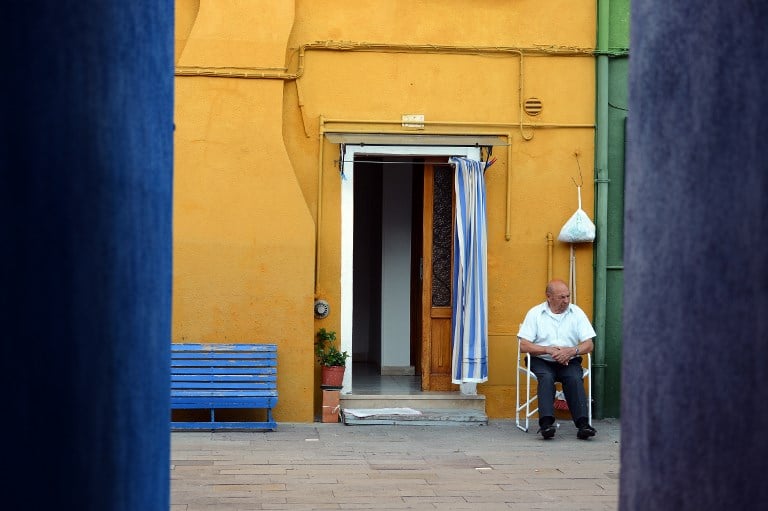
Photo: Gabriel Bouys/AFP
Foreigners make up 8.5 percent of Italy's population.
Italy had 5.1 million registered foreign residents at the start of 2018, 1.9 percent more than the year before. Some 3.7 million of them come from outside the EU.
In terms of the percentage of foreigners within the total population, Italy is slightly above the EU average and about on par with Denmark and Sweden.
Italy has a lower employment rate than almost any other EU country.
The Italian employment rate was 62.3 percent among 20-64 year olds in 2017, behind everywhere else in Europe except Greece. It's particularly low for women, just 53.1 percent of whom are employed compared to 72.9 percent of men.
Meanwhile the percentage of self-employed workers remains higher in Italy than almost anywhere in the EU, at 29.2 percent compared to the EU average of 13.2 percent. Only Greece has more entrepreneurs.
READ ALSO: Foreign business owners in Italy have increased by a third since 2010

Photo: Marco Bertorello/AFP
The average Italian household makes €2,550 a month.
In 2016, average net income per household was €30,595 per year. But because Italy's wealth is distributed very unequally, the majority of households actually earn less than that: half survive on less than €2,091 a month.
The highest earners are in the province of Bolzano in Trentino-Alto Adige, where households make over €15,000/year more than the lowest-earning region, Sicily.
Nearly a fifth of people live in poverty in Italy.
The percentage of Italian households living in relative poverty rose to 12.3 percent in 2017 – the equivalent of 9.4 million people, or 15.6 percent of the entire population – while the percentage of households in absolute poverty was 6.9 percent.
The highest poverty rate is in Calabria, where more than a third of households live in relative poverty, while the lowest is in Valle d'Aosta, where the rate is less than 5 percent.
READ ALSO: 2.7 million people apply for Italy's basic income scheme
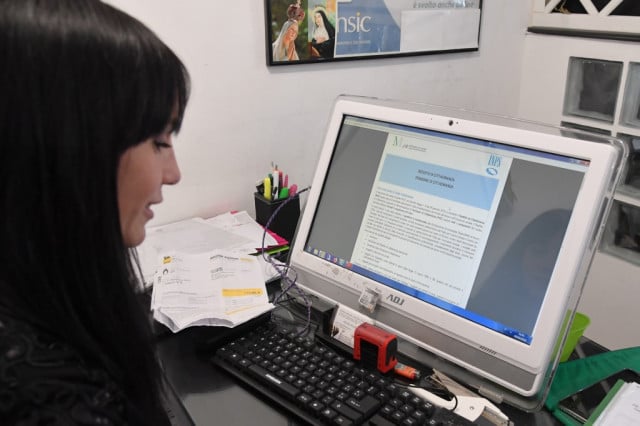
Photo: Tiziana Fabi/AFP
Young people in Italy are less likely than anywhere else in the EU to be in education, employment or training.
Italy has the highest percentage of NEETs of any European country: 24.1 percent of its 15-24 year olds weren't in education, employment or training in 2017, compared to an EU average of 13.4 percent. The rate rises to more than 38 percent in Calabria and Sicily.
And in the wider population, Italy ranks poorly for education compared to its neighbours: 39.1 percent of 25-64 year olds in Italy have only lower secondary school education, as opposed to 22.5 percent across the EU.
Less than half of Italians read a book in the past year.
Only 40.6 percent of Italians aged 6 and up read at least one book in the last 12 months, Istat found in 2018. In Sicily and Calabria, the proportion dropped to around one-quarter. While people in the centre and north of Italy were by and large the biggest readers, Sardinia is an island of bookworms: it bucked the regional trend with a higher percentage of readers than any other southern region and several northern ones.
More than 30 percent of Italians don't use the internet.
Just 69 percent of adults in Italy say they are internet users, compared to an EU average of 81 percent. Some 79 percent of Italian households have a broadband connection, under the European average of 85 percent.
READ ALSO: Foreigners rank Italy 'worst in Europe' for internet and paying without cash

Photo: Vincenzo Pinto/AFP
Italians feel significantly safer from crime.
Less than a third of Italian households, 28.6 percent, said that they thought crime was a risk in their area in 2018, compared to 41.1 percent in 2015. Lazio was the region where residents were most likely to feel at risk (43.1 percent), but even that rate has decreased by around 10 percent over the past three years.
The region where residents felt safest was Molise, where just 10.2 percent of households reported perceiving a crime risk, followed by Trentino-Alto Adige (12.4) and Sardinia (14.1).
READ ALSO: Italy just made it easier to claim self-defence if you hurt or kill an intruder
Residents' impressions are borne out by the numbers: the rates of murders, thefts and robberies in Italy have all been decreasing for several years.
Italy now has one of the lowest murder rates in Europe (0.6 homicides per 100,000 people in 2017). The rates were highest in the south of Italy, with the single highest rate in Puglia (whose murder rate is twice the national average), while the lowest incidence was in Molise, which had a murder rate per thousand inhabitants of... 0.0.
Italians own more cars than almost any other EU country.
Italy had 625.1 passenger cars per 1,000 inhabitants in 2016, more than any other country except Luxembourg.
But despite that figure – and the country's reputation for dangerous driving – Italy sees fewer fatal traffic accidents than you might expect: 55.8 road deaths per million residents, less than ten other EU countries with smaller populations. The EU average is 49.7.
Basilicata, Veneto and Emilia-Romagna are the regions with the highest rate of road deaths, while Valle d'Aosta, Liguria and Campania have the lowest.
READ ALSO: 'Expect the unexpected': What you need to know about driving in Italy
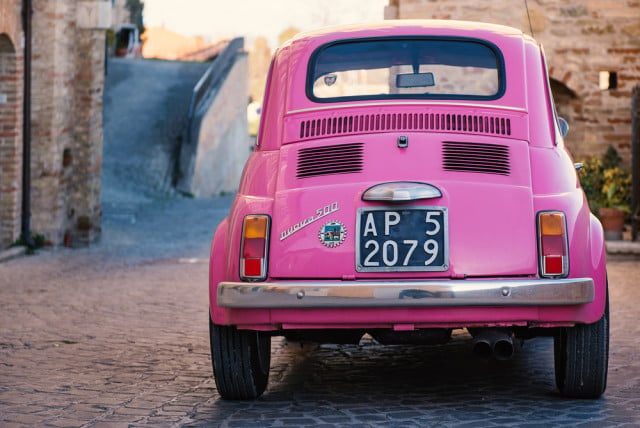
Photo: DepositPhotos
Italy emits 428 million tons of greenhouse gas per year.
The country reduced its CO2 emissions by 17.5 percent between 1990 and 2016. But nearly 38 percent of Italian households said air pollution was a problem where they lived, with residents in Lombardy, Lazio and Campania suffering the most.
Less than a third of Italy's electricity comes from renewable sources.
Italy produced 31.2 percent of its power from renewable sources in 2017. But tiny Valle d'Aosta is a clean energy powerhouse, producing more than double the amount of renewable energy than it uses.
The price of consumer goods is increasing more slowly in Italy than most other EU countries.
Italy's rate of inflation was 1.2 percent in 2018, below the EU average (1.9 percent) for the third year in a row.
Italy is the only country in Europe where house prices are falling.
Italian house prices fell by 1.1 percent in 2017, making it the only EU country to shed property value. The drop was felt everywhere except for new builds in the south and islands.
READ ALSO:
- What's wrong with the Italian property market?
- What can you buy for 500K around Italy?
- The real cost of buying a house in Italy as a foreigner
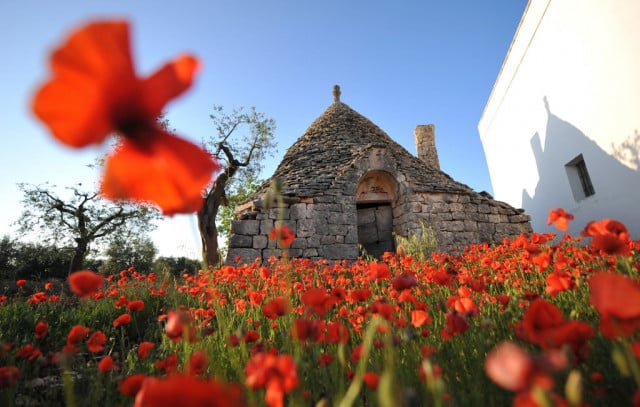
Photo: Christophe Simon/AFP
Home building is booming in Trentino-Alto Adige.
The northern region issued 7.8 permits for new residential buildings per 1,000 residents in 2016, with home building especially high in the province of Bolzano.
The Italian regions authorising the fewest new homes, meanwhile, are Tuscany and Liguria, where just 0.7 permits were given per 1,000 residents.
Nearly one-fifth of Italy is EU-protected land.
A total of 19.3 percent of Italy's surface area belongs to the EU's Natura 2000 network of protected habitats, the equivalent of 58,000 km2 and nearly 6,000 km2 of sea. Abruzzo has the highest proportion of protected territory: 35.7 percent of its surface area.
Italy has the highest number of protected-origin products in Europe.
A total of 295 Italian products had obtained the EU's protected designation of origin, protected geographical indication or traditional speciality guaranteed label by 2018 – making up one fifth of all products awarded the status.
Italy has the lowest obesity rate of 21 OECD countries.
Out of 21 members of the Organisation for Economic Cooperation and Development, Italy has the lowest incidence of obesity: 10.5 percent of adults compared to more than 20 percent at the other end of the scale in Hungary and the UK.
READ ALSO: What can Italy teach the rest of the world about health?
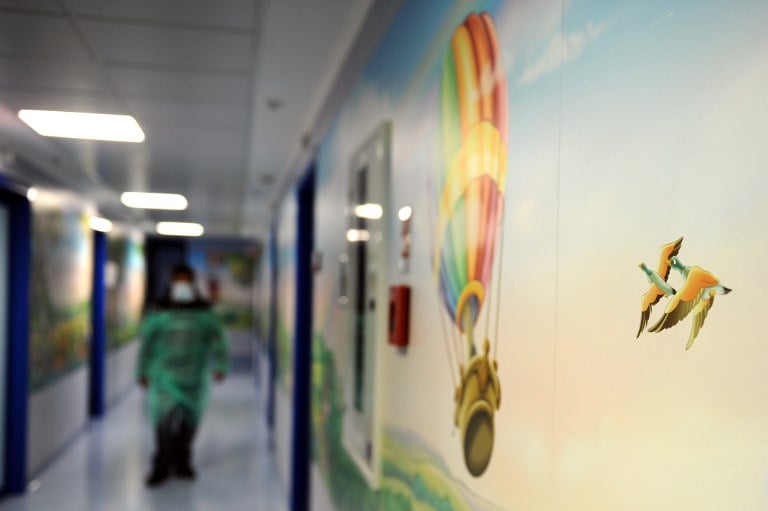
Italians' top region to visit is Emilia-Romagna.
Among domestic travellers, the top destinations were Emilia-Romagna, Veneto, Tuscany, Lombardy, Lazio and Campania – which together accounted for 53 percent of all travel.
Italians' least visited region, meanwhile, is Molise, which accounted for just 0.2 percent of domestic trips.
Italy has more than 23,000 agritourism farms.
Tuscany has the highest number, and more than a third are run by women.
Italy has the highest number of bathing spots in Europe and nearly 90 percent of them are high quality.
According to EU standards, 89.9 percent of Italy's 5,531 bathing areas are "excellent quality". The regions where the highest percentage of bathing waters are top-rated are Umbria, Puglia and Trentino-Alto Adige.
READ ALSO: This map reveals the cleanest and greenest beaches in Italy
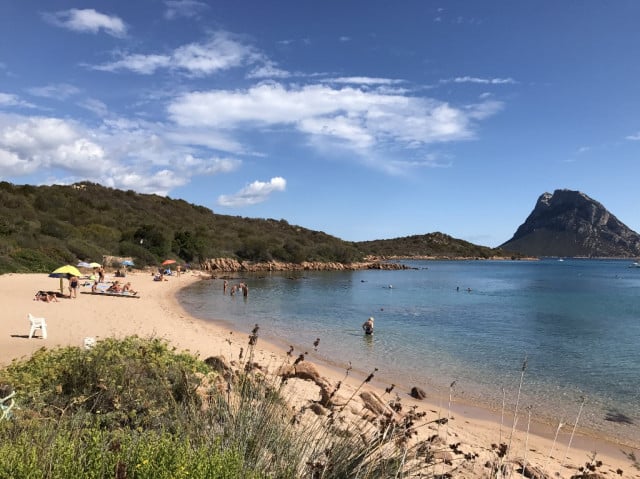
Photo: Daniel Slim/AFP
All figures were provided by Istat and refer to the most recent data available.
Comments
See Also
Nearly 12 percent of all Europeans are Italian.
Italy is the EU's fourth biggest country by population behind Germany, France and the UK. It makes up 11.8 percent of Europe's total population of 512 million.
Italy's total resident population is 60.39 million.
Just over 60 million people lived in Italy by 2018, Istat estimates, the lowest number since 2012. There are over a million and a half more women than men: 31.06 million women outnumber 29.43 million men.
READ ALSO:
- Thousands of idyllic Italian villages risk dying out
- Why Airbnb thinks a free holiday can help fix Italy's depopulation problem
- Where do all the English speakers live in Italy?
More than a third of the population is concentrated in just three regions: Lombardy, Lazio and Campania. The region with the smallest population is Valle d'Aosta.
Italy's average life expectancy is 82.7 years.
Men can expect to live 80.8 years, while women outlive them to 85.2 years. The longest-living region is Trentino-Alto Adige, while the regions with the lowest life expectancy are Campania and Sicily.
In Europe, Italy has the fourth highest life expectancy behind Spain, France and Luxembourg.
READ ALSO: From now on in Italy, you're only old after 75

Photo: Mario Laporta/AFP
Italy's birth rate is almost the lowest in Europe.
Italian women had an average of 1.34 children in 2016. In Europe, only Spaniards had fewer babies. And Italy's birth rate has probably dropped even further since then: Istat estimates it was 1.32 children/woman in 2018.
Italy's population is the most ageing in Europe.
Italy's ageing index, the number of people aged 65 per 100 people aged under 15, is the highest in the EU at 165.3. It's estimated to have climbed even higher in 2018 to 168.9, a new national record and an increase of over 25 in ten years.
READ ALSO: What does a plummeting birth rate mean for Italy's future?

Photo: Gabriel Bouys/AFP
Foreigners make up 8.5 percent of Italy's population.
Italy had 5.1 million registered foreign residents at the start of 2018, 1.9 percent more than the year before. Some 3.7 million of them come from outside the EU.
In terms of the percentage of foreigners within the total population, Italy is slightly above the EU average and about on par with Denmark and Sweden.
Italy has a lower employment rate than almost any other EU country.
The Italian employment rate was 62.3 percent among 20-64 year olds in 2017, behind everywhere else in Europe except Greece. It's particularly low for women, just 53.1 percent of whom are employed compared to 72.9 percent of men.
Meanwhile the percentage of self-employed workers remains higher in Italy than almost anywhere in the EU, at 29.2 percent compared to the EU average of 13.2 percent. Only Greece has more entrepreneurs.
READ ALSO: Foreign business owners in Italy have increased by a third since 2010

Photo: Marco Bertorello/AFP
The average Italian household makes €2,550 a month.
In 2016, average net income per household was €30,595 per year. But because Italy's wealth is distributed very unequally, the majority of households actually earn less than that: half survive on less than €2,091 a month.
The highest earners are in the province of Bolzano in Trentino-Alto Adige, where households make over €15,000/year more than the lowest-earning region, Sicily.
Nearly a fifth of people live in poverty in Italy.
The percentage of Italian households living in relative poverty rose to 12.3 percent in 2017 – the equivalent of 9.4 million people, or 15.6 percent of the entire population – while the percentage of households in absolute poverty was 6.9 percent.
The highest poverty rate is in Calabria, where more than a third of households live in relative poverty, while the lowest is in Valle d'Aosta, where the rate is less than 5 percent.
READ ALSO: 2.7 million people apply for Italy's basic income scheme

Photo: Tiziana Fabi/AFP
Young people in Italy are less likely than anywhere else in the EU to be in education, employment or training.
Italy has the highest percentage of NEETs of any European country: 24.1 percent of its 15-24 year olds weren't in education, employment or training in 2017, compared to an EU average of 13.4 percent. The rate rises to more than 38 percent in Calabria and Sicily.
And in the wider population, Italy ranks poorly for education compared to its neighbours: 39.1 percent of 25-64 year olds in Italy have only lower secondary school education, as opposed to 22.5 percent across the EU.
Less than half of Italians read a book in the past year.
Only 40.6 percent of Italians aged 6 and up read at least one book in the last 12 months, Istat found in 2018. In Sicily and Calabria, the proportion dropped to around one-quarter. While people in the centre and north of Italy were by and large the biggest readers, Sardinia is an island of bookworms: it bucked the regional trend with a higher percentage of readers than any other southern region and several northern ones.
More than 30 percent of Italians don't use the internet.
Just 69 percent of adults in Italy say they are internet users, compared to an EU average of 81 percent. Some 79 percent of Italian households have a broadband connection, under the European average of 85 percent.
READ ALSO: Foreigners rank Italy 'worst in Europe' for internet and paying without cash

Photo: Vincenzo Pinto/AFP
Italians feel significantly safer from crime.
Less than a third of Italian households, 28.6 percent, said that they thought crime was a risk in their area in 2018, compared to 41.1 percent in 2015. Lazio was the region where residents were most likely to feel at risk (43.1 percent), but even that rate has decreased by around 10 percent over the past three years.
The region where residents felt safest was Molise, where just 10.2 percent of households reported perceiving a crime risk, followed by Trentino-Alto Adige (12.4) and Sardinia (14.1).
READ ALSO: Italy just made it easier to claim self-defence if you hurt or kill an intruder
Residents' impressions are borne out by the numbers: the rates of murders, thefts and robberies in Italy have all been decreasing for several years.
Italy now has one of the lowest murder rates in Europe (0.6 homicides per 100,000 people in 2017). The rates were highest in the south of Italy, with the single highest rate in Puglia (whose murder rate is twice the national average), while the lowest incidence was in Molise, which had a murder rate per thousand inhabitants of... 0.0.
Italians own more cars than almost any other EU country.
Italy had 625.1 passenger cars per 1,000 inhabitants in 2016, more than any other country except Luxembourg.
But despite that figure – and the country's reputation for dangerous driving – Italy sees fewer fatal traffic accidents than you might expect: 55.8 road deaths per million residents, less than ten other EU countries with smaller populations. The EU average is 49.7.
Basilicata, Veneto and Emilia-Romagna are the regions with the highest rate of road deaths, while Valle d'Aosta, Liguria and Campania have the lowest.
READ ALSO: 'Expect the unexpected': What you need to know about driving in Italy

Photo: DepositPhotos
Italy emits 428 million tons of greenhouse gas per year.
The country reduced its CO2 emissions by 17.5 percent between 1990 and 2016. But nearly 38 percent of Italian households said air pollution was a problem where they lived, with residents in Lombardy, Lazio and Campania suffering the most.
Less than a third of Italy's electricity comes from renewable sources.
Italy produced 31.2 percent of its power from renewable sources in 2017. But tiny Valle d'Aosta is a clean energy powerhouse, producing more than double the amount of renewable energy than it uses.
The price of consumer goods is increasing more slowly in Italy than most other EU countries.
Italy's rate of inflation was 1.2 percent in 2018, below the EU average (1.9 percent) for the third year in a row.
Italy is the only country in Europe where house prices are falling.
Italian house prices fell by 1.1 percent in 2017, making it the only EU country to shed property value. The drop was felt everywhere except for new builds in the south and islands.
READ ALSO:
- What's wrong with the Italian property market?
- What can you buy for 500K around Italy?
- The real cost of buying a house in Italy as a foreigner

Photo: Christophe Simon/AFP
Home building is booming in Trentino-Alto Adige.
The northern region issued 7.8 permits for new residential buildings per 1,000 residents in 2016, with home building especially high in the province of Bolzano.
The Italian regions authorising the fewest new homes, meanwhile, are Tuscany and Liguria, where just 0.7 permits were given per 1,000 residents.
Nearly one-fifth of Italy is EU-protected land.
A total of 19.3 percent of Italy's surface area belongs to the EU's Natura 2000 network of protected habitats, the equivalent of 58,000 km2 and nearly 6,000 km2 of sea. Abruzzo has the highest proportion of protected territory: 35.7 percent of its surface area.
Italy has the highest number of protected-origin products in Europe.
A total of 295 Italian products had obtained the EU's protected designation of origin, protected geographical indication or traditional speciality guaranteed label by 2018 – making up one fifth of all products awarded the status.
Italy has the lowest obesity rate of 21 OECD countries.
Out of 21 members of the Organisation for Economic Cooperation and Development, Italy has the lowest incidence of obesity: 10.5 percent of adults compared to more than 20 percent at the other end of the scale in Hungary and the UK.
READ ALSO: What can Italy teach the rest of the world about health?

Italians' top region to visit is Emilia-Romagna.
Among domestic travellers, the top destinations were Emilia-Romagna, Veneto, Tuscany, Lombardy, Lazio and Campania – which together accounted for 53 percent of all travel.
Italians' least visited region, meanwhile, is Molise, which accounted for just 0.2 percent of domestic trips.
Italy has more than 23,000 agritourism farms.
Tuscany has the highest number, and more than a third are run by women.
Italy has the highest number of bathing spots in Europe and nearly 90 percent of them are high quality.
According to EU standards, 89.9 percent of Italy's 5,531 bathing areas are "excellent quality". The regions where the highest percentage of bathing waters are top-rated are Umbria, Puglia and Trentino-Alto Adige.
READ ALSO: This map reveals the cleanest and greenest beaches in Italy

Photo: Daniel Slim/AFP
All figures were provided by Istat and refer to the most recent data available.
Join the conversation in our comments section below. Share your own views and experience and if you have a question or suggestion for our journalists then email us at [email protected].
Please keep comments civil, constructive and on topic – and make sure to read our terms of use before getting involved.
Please log in here to leave a comment.